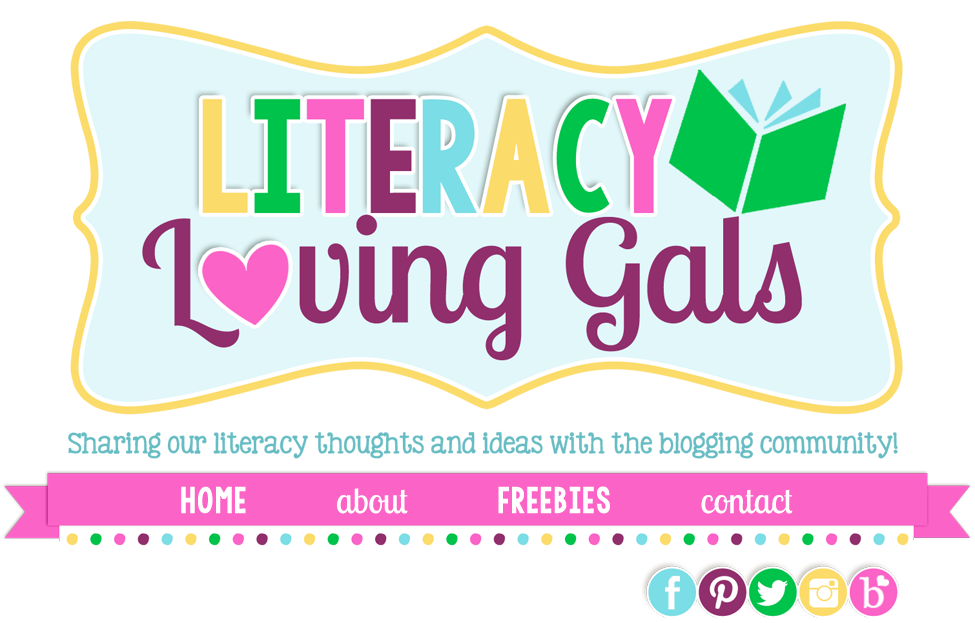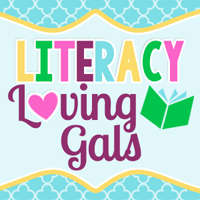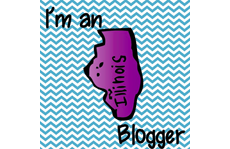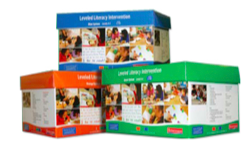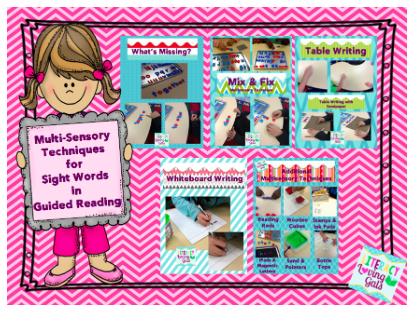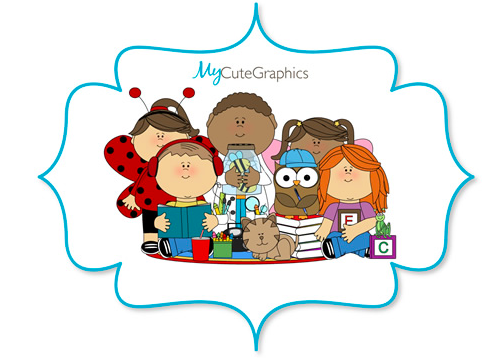Welcome back for Conference Recap, Part 2 discussing the three components defining 'Readers as Thinkers'! This post touches on reader voices, what it takes to make an inference and the Close-Reading framework. If you missed Part 1: Defining the Reading Range, and are interested in taking a peek, click HERE.
Three Components Defining
'Readers as Thinkers'
Component 1~ Reader Voices: Reading, Thinking, Distracting
Looking for ways to make the reading process more concrete for students? Model the voices readers hear via "think aloud lessons" using Reading Voice, Thinking Voice and Distracting Voice signs signaling which voice you are modeling. Explicit think aloud lessons help students develop their own ability to monitor thinking while reading, which, in turn, enhances their comprehension. When I attended the Smekens Literacy Retreat last summer, I purchased the Reader Voice signs in the picture below. They have proved to be useful visual cues for my kiddos. (To purchase your own set, click HERE.)
I absolutely love reading Elephant and Piggie books. They have such cute story lines and delightful characters. Kristina discussed this series as being a valuable tool for modeling reading and thinking voices, since the stories often show thought bubbles and speaking bubbles coming from the characters.
Have you encountered students who believe reading relates to speed? Yes, it is true the more fluent of a reader, the better the comprehension. However, students who are *Nascar readers*, as Kristina explains, tend to read at full speed, but are not grasping the concepts or gist in their texts. They say, "I wasn't thinking, I was reading!" These are the students needing teacher support. Explain to students how good readers read a little, stop and have a thought. Then, read a little more, make a connection, a prediction and/or ask a question. Tell students the reason teachers ask questions and stop so often is to get students to think! :)
Having *reading thoughts* is part of reading, but this needs to be explicitly taught. Teachers must model reading thoughts! Teaching writing is no easy task, but it has a product and is visible learning for teacher and peer feedback. Reading, on the other hand, is more difficult to teach because it is invisible. Good practice is reading a page or two aloud to students, tagging stopping points about confusing vocabulary, questions you have and/or predictions that got answered because it allows students to see reading as visible process.
Advice for teachers: DO NOT READ ON MUTE! Read, pause, retell, read, pause, think, ask questions, etc. out loud in front of students. Modeling this process and naming the voice being used (thinking voice, reading voice, distracting voice) is crucial. Explain to students,
"When you hear your distracting voice in your head, such as 'Boy, I'm getting hungry. I wonder what's being served for lunch today?', you must turn that distracting voice on MUTE. Your thinking voice must tell your distracting voice to STOP. Your thinking voice must then apologize to your reading voice. Finally, reread your text to start thinking again."
To be honest, I have loads of conversations in my head. Though, most are unproductive and not worthy of sharing, it's nice to know I'm still sane. :)
Component 2~ Inferring and Making Inferences: What does it take to make an inference?
What does it take to make an inference? Having thoughts, of course! Tell students, "The conversation in your head means you're making inferences. Take the text clues from your background knowledge and partner them up with new information. This equals an inference." Kristina claims there is no need to teach the skill of making inferences in a separate lesson because inferring can be taught in the middle of ALL lessons. In order to make this abstract idea become more concrete for students, Kristina recommends using hands-on manipulatives.
Kristina used the example of velcro representing background knowledge and new ideas, along with a small backpack of some sort representing schema. These items can help make the concept of inferences more tangible for students. She purchases a small amount of velcro, as well as mini backpacks or cell phone cases for each student.
**Disclaimer: Before I begin this next paragraph, I must forewarn you I will probably not do this concept justice. Kristina has a way of flawlessly presenting the information. I've laughed to myself trying to make the following information sound coherent, but the struggle is real, people. Nonetheless, here I go. ;)
**As we all know, velcro has a smooth side and sticky side. Try (like I'm doing right now!) to explain to students to connect the familiar (background knowledge/sticky side of velcro) to the unfamiliar (new information/smooth side of velcro). New information sticks to nothing (smooth side of velcro) unless you rely on your background knowledge (sticky side of velcro) pulled from your brain backpack (schema). Tell students,
"Connect what you know with what you don't know. Open up your brain backpacks, pull out and reference your background knowledge to stick it to the new learning. Then shove sticky velcro/new knowledge into your backpack. When you go to read, you have knowledge to stick it to using the reading and the thinking voice."
**Hopefully, you're able to understand the whole velcro analogy and how it relates to making inferences. Moving on!
Kristina remarked on the importance of teachers needing to make time during class to allow students to turn and talk with peers. A suggested activity is to have students talk to a partner with toilet paper tubes (cheap and easy to acquire!) to whisper "thinking" thoughts. The picture below was used at the conference as an example.
Another suggested idea was to create an anchor bulletin board for reading strategies which is comprised of snapshots of picture book covers read to introduce the particular strategy. The snapshots serve to trigger the lesson for the kids. As an example, the black and white book covers next to two of the strategies are shown below.
Overall, you must model how to read and replace students' current thoughts of *being on mute* with what good readers should be thinking. Teachers need to slow down to speed up. Slow down and model for students, so they can speed up throughout the rest of the year. These activities will definitely support their use of metacognition.
Component 3: Close-Reading Framework
Last, but not least, is the close-reading framework. To better visualize the framework, envision a ladder that climbs down into a deeper and deeper part of the pool. The framework is only applicable to complex texts and should be taught early in the year. Realistically, students may participate in close-reading approximately two to three times per month, NOT daily!
There are 3 PHASES of reading. This does NOT necessarily mean reading a text 3 times. Kristina states it may require students to read a text up to 4-6 times. The following images were given to attendees at the conference.
Phase 1: Determine what a text says
Bloom's Level of Learning: Knowledge & Comprehension
Phase 2: Determine how text says it
Bloom's Level of Learning: Application & Analysis
Phase 3: Determine what the text means
Bloom's Level of Learning: Synthesis & Evaluation
The first read is always reading for the gist or the WHAT of the text.
The second read is for craft and structure or the HOW of the text.
The third read is focused on the author's style and topic or the WHY the text matters.
I picked up the resources in the picture below at the conference to help me better prompt my students and cue them on the 3 phases of close-reading with visual reminders.
Teachers should target reading skills in isolated comprehension mini-lessons followed by frequent close-reading experiences. Students need to be able to juggle reading skills, as well as their own thoughts/inferences, to fully comprehend a text. The best way to achieve this is to briefly teach every strategy at the start of the year and then build onto each strategy throughout the year using a year-long bulletin board. The bulletin board serves as a record of your lessons.
As an example, Kristina mentioned creating a bulletin board filled with umbrellas and raindrops. She stated, "Add an umbrella for every comprehension strategy and then add raindrop skills all year long." When working with students, she introduces each umbrella's comprehension strategy at the start of the year. As the year progresses, she goes into more depth by adding reading skills represented on the raindrops that fall under each comprehension strategy. Kristina doesn't teach the skills in any particular order and prefers to jump around basing the skills on the texts she chooses. If you're in a 1:1 technology district like me, an option is to create a digital bulletin board for students to reference throughout the year with Padlet!
When teaching any skill in isolation, always use EASY text so students can focus on the skill without juggling text complexity. Never start with complex texts. Teach a few skills before jumping into a complex text. For example, teach students how info-graphics add information beyond the text before having them read a complex text that is comprised mostly of info-graphics. Ultimately, if the six comprehension strategies are a big portion of your instructional foundation (which they should be), consider making them part of your physical space.
Well, there you have it. Hope you learned something new! I'll be back soon for Conference Recap, Part 3: Mini-Lesson Ideas for Reading Strategies.
Happy Wednesday!
